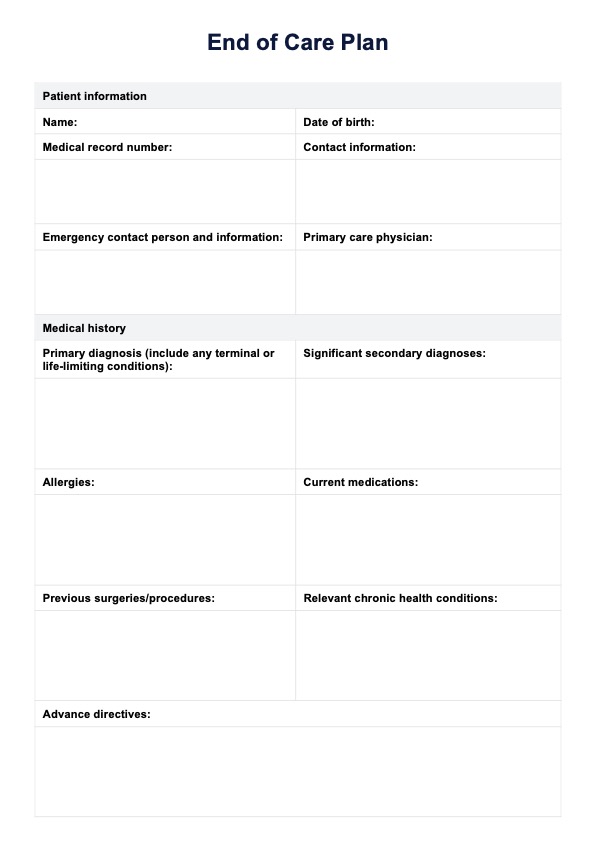An end-of-life care plan is important because it ensures patients' wishes regarding medical treatment and personal care are clearly documented and respected. This plan enhances the quality of care and provides comfort and peace of mind for both the patient and their loved ones during a challenging time.

End Of Life Care Plan
An end-of-life care plan is an important step towards dignified death and effective palliative care. Learn what to include and more in this informative guide!
End Of Life Care Plan Template
Commonly asked questions
Healthcare professionals use end-of-life care plans to guide treatment decisions and care delivery based on the patient’s preferences. It is a communication tool among the health care team, ensuring everyone understands the patient’s desires and coordinates their efforts accordingly.
The four stages of end-of-life care typically include the assessment stage, where patient needs are evaluated; the planning stage, involving the development of the care plan; the implementation stage, where care is provided according to the plan; and the evaluation stage, where the effectiveness of the care plan is reviewed and adjusted as necessary.
EHR and practice management software
Get started for free
*No credit card required
Free
$0/usd
Unlimited clients
Telehealth
1GB of storage
Client portal text
Automated billing and online payments











